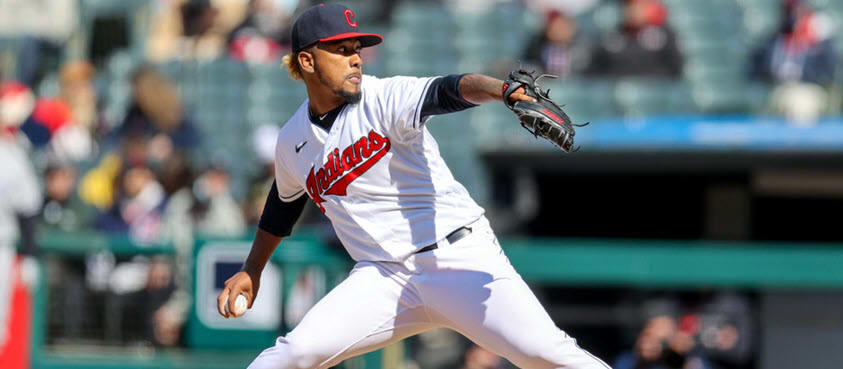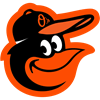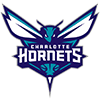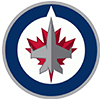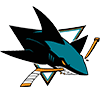Drafting closers is always a popular discussion, but it's risen to a new level this offseason. With many bullpens deploying committees, there has been a shift towards locking down saves early, especially in Draft and Hold formats. The notion is, without the ability to pick up saves via free agency in-season, it's obligatory to secure them via the draft.
Truth be told, this has always been the approach. The difference is this season, the inventory of perceived safe closers is smaller than ever. Economics 101 teaches us about supply and demand. In this case, the dwindling supply has fueled an increased demand, sending prices soaring.
Here is a table showing the ADP of the top-15 closers in the NFBC Draft Champions format. These are 15-team draft and hold leagues with 50 roster spots. The time frame reflects when the draft finished. There are at least 12 drafts per period.
| Player | Team | Dec. 1-15 | Dec 16-31 | Jan 1-15 |
|---|---|---|---|---|
| Liam Hendriks | CWS | 33.08 | 31.47 | 29.58 |
| Josh Hader | MLW | 34.75 | 31.71 | 30.42 |
| Raisel Iglesias | LAA | 49.25 | 45.71 | 43.83 |
| Emmanuel Clase | CLE | 50.75 | 49.71 | 49.25 |
| Edwin Diaz | NYM | 56.92 | 55.06 | 50.75 |
| Ryan Pressly | HOU | 60.25 | 54.94 | 56.25 |
| Aroldis Chapman | NYY | 67.25 | 65.35 | 67.25 |
| Kenley Jansen | LAD | 76.75 | 72 | 74.75 |
| Will Smith | ATL | 83.83 | 79.82 | 79.58 |
| Giovanny Gallegos | STL | 88.33 | 84.35 | 86.83 |
| Jordan Romano | TOR | 91.92 | 84.06 | 84.5 |
| Mark Melancon | ARZ | 110.42 | 108.41 | 104.83 |
| Craig Kimbrel | CWS | 114.75 | 118.76 | 108.58 |
| Camilo Doval | SF | 132.08 | 132.82 | 125.17 |
| Corey Knebel | PHI | 141.92 | 132.59 | 124.92 |
Look at the
Drafting closers is always a popular discussion, but it's risen to a new level this offseason. With many bullpens deploying committees, there has been a shift towards locking down saves early, especially in Draft and Hold formats. The notion is, without the ability to pick up saves via free agency in-season, it's obligatory to secure them via the draft.
Truth be told, this has always been the approach. The difference is this season, the inventory of perceived safe closers is smaller than ever. Economics 101 teaches us about supply and demand. In this case, the dwindling supply has fueled an increased demand, sending prices soaring.
Here is a table showing the ADP of the top-15 closers in the NFBC Draft Champions format. These are 15-team draft and hold leagues with 50 roster spots. The time frame reflects when the draft finished. There are at least 12 drafts per period.
| Player | Team | Dec. 1-15 | Dec 16-31 | Jan 1-15 |
|---|---|---|---|---|
| Liam Hendriks | CWS | 33.08 | 31.47 | 29.58 |
| Josh Hader | MLW | 34.75 | 31.71 | 30.42 |
| Raisel Iglesias | LAA | 49.25 | 45.71 | 43.83 |
| Emmanuel Clase | CLE | 50.75 | 49.71 | 49.25 |
| Edwin Diaz | NYM | 56.92 | 55.06 | 50.75 |
| Ryan Pressly | HOU | 60.25 | 54.94 | 56.25 |
| Aroldis Chapman | NYY | 67.25 | 65.35 | 67.25 |
| Kenley Jansen | LAD | 76.75 | 72 | 74.75 |
| Will Smith | ATL | 83.83 | 79.82 | 79.58 |
| Giovanny Gallegos | STL | 88.33 | 84.35 | 86.83 |
| Jordan Romano | TOR | 91.92 | 84.06 | 84.5 |
| Mark Melancon | ARZ | 110.42 | 108.41 | 104.83 |
| Craig Kimbrel | CWS | 114.75 | 118.76 | 108.58 |
| Camilo Doval | SF | 132.08 | 132.82 | 125.17 |
| Corey Knebel | PHI | 141.92 | 132.59 | 124.92 |
Look at the movement of the top six closers. It takes a second-round pick to secure Hendricks and Hader. It won't be long before Clase, Diaz and maybe Pressly join Iglesias in Round 3.
The reason is clear. Many prefer to get saves out of the way and let others speculate later.
Since DC leagues are as much about attrition as drafting prowess, it could be argued expending an early pick on a closer doesn't put one behind the eight ball as much as before, since the void in offense or starting pitching can be made up with a healthier and deeper roster.
What follows is some data to aid in your own decision. Everyone will interpret it differently, with a bias towards justifying their agenda. That's fine. My objective isn't to convince you to draft in a certain manner. My track record doesn't warrant such a lofty endpoint. However, I am pretty good at helping you think it through, to come up with your own approach.
The first table shows the ADP, saves, and saves rank for the first 30 closers drafted in the 2021 NFBC Draft Champions format.
| Player | ADP | Saves | Rank |
|---|---|---|---|
| Josh Hader | 56.82 | 34 | 5 |
| Liam Hendriks | 57.37 | 38 | 2 |
| Aroldis Chapman | 69.78 | 30 | 9 |
| Edwin Diaz | 72.63 | 32 | 7 |
| Raisel Iglesias | 81.51 | 34 | 5 |
| James Karinchak | 96.97 | 11 | 33 |
| Ryan Pressly | 103.14 | 26 | 11 |
| Brad Hand | 110.84 | 21 | 18 |
| Kenley Jansen | 115.91 | 38 | 2 |
| Alex Colome | 159.16 | 17 | 21 |
| Craig Kimbrel | 166.34 | 24 | 13 |
| Rafael Montero | 173.41 | 7 | 48 |
| Taylor Rogers | 176.3 | 9 | 40 |
| Will Smith | 191.94 | 37 | 4 |
| Richard Rodriguez | 194.87 | 14 | 26 |
| Matt Barnes | 208.89 | 24 | 13 |
| Greg Holland | 240.23 | 8 | 42 |
| Mark Melancon | 263.53 | 39 | 1 |
| Giovanny Gallegos | 266.25 | 14 | 26 |
| Daniel Bard | 270.42 | 20 | 19 |
| Amir Garrett | 282.74 | 7 | 48 |
| Hector Neris | 282.79 | 12 | 32 |
| Diego Castillo | 290.81 | 16 | 22 |
| Jordan Romano | 306.43 | 23 | 16 |
| Yimi Garcia | 354.84 | 15 | 24 |
| Jake McGee | 360.53 | 31 | 8 |
| Joakim Soria | 364.85 | 6 | 53 |
| Lucas Sims | 373.01 | 7 | 48 |
| Alex Reyes | 374.08 | 29 | 10 |
| Pete Fairbanks | 382.59 | 5 | 56 |
Again, everyone will spin the results in their favor. Putting aside the 24-pick difference between where Hader and Hendriks were drafted last season compared to now, someone will contend drafting an early closer almost guaranteed securing a guy finishing in the top 10 in the saves category, with a good chance at top five. Another might suggest they'd rather wait and hope to land on a top-10 guy later.
Here is the same data for 2019, skipping the pandemic season for obvious reasons.
| Player | ADP | Saves | Rank |
|---|---|---|---|
| Edwin Diaz | 51.03 | 26 | 15 |
| Blake Treinen | 64.92 | 16 | 26 |
| Kenley Jansen | 73.49 | 33 | 8 |
| Aroldis Chapman | 78.65 | 37 | 3 |
| Craig Kimbrel | 79.38 | 13 | 32 |
| Roberto Osuna | 81.73 | 38 | 2 |
| Brad Hand | 82.53 | 34 | 5 |
| Felipe Vazquez | 86.98 | 28 | 13 |
| Raisel Iglesias | 100.82 | 34 | 5 |
| Sean Doolittle | 101.5 | 29 | 12 |
| Josh Hader | 106.66 | 37 | 3 |
| Jose Leclerc | 106.86 | 14 | 29 |
| Kirby Yates | 109.17 | 41 | 1 |
| Wade Davis | 116.65 | 15 | 28 |
| Ken Giles | 126.57 | 23 | 18 |
| Jose Alvarado | 151.02 | 7 | 41 |
| Carlos Martinez | 172.05 | 24 | 17 |
| Will Smith | 179.14 | 34 | 5 |
| Archie Bradley | 195.73 | 18 | 23 |
| Jordan Hicks | 199.4 | 14 | 29 |
| Alex Colome | 215.5 | 30 | 9 |
| Mychal Givens | 226.92 | 11 | 34 |
| Andrew Miller | 244.05 | 6 | 45 |
| Pedro Strop | 245.43 | 10 | 36 |
| Shane Greene | 255.61 | 23 | 18 |
| A.J. Minter | 265.23 | 5 | 47 |
| Julio Urias | 269.77 | 4 | 53 |
| Matt Barnes | 293.85 | 4 | 53 |
| Joe Jimenez | 356.93 | 9 | 38 |
| Blake Parker | 380.83 | 10 | 36 |
And for 2018:
| Player | ADP | Saves | Rank |
|---|---|---|---|
| Kenley Jansen | 37.24 | 38 | 4 |
| Craig Kimbrel | 45.47 | 42 | 3 |
| Carlos Martinez | 51.92 | 5 | 54 |
| Aroldis Chapman | 62.01 | 32 | 7 |
| Corey Knebel | 64.76 | 16 | 23 |
| Roberto Osuna | 73.58 | 21 | 20 |
| Felipe Vazquez | 81.21 | 37 | 6 |
| Edwin Diaz | 83.94 | 57 | 1 |
| Cody Allen | 85.4 | 27 | 13 |
| Ken Giles | 85.44 | 26 | 14 |
| Raisel Iglesias | 88.34 | 30 | 11 |
| Wade Davis | 95.47 | 43 | 2 |
| Brad Hand | 96.12 | 32 | 7 |
| Sean Doolittle | 107.17 | 25 | 15 |
| Alex Colome | 117.9 | 12 | 36 |
| Hector Neris | 127.66 | 11 | 41 |
| Trevor Bauer | 134.08 | 1 | 111 |
| Arodys Vizcaino | 135.7 | 16 | 23 |
| Jeurys Familia | 150.84 | 18 | 21 |
| Mark Melancon | 152.31 | 3 | 70 |
| Greg Holland | 153.43 | 3 | 70 |
| Blake Treinen | 157.97 | 38 | 4 |
| Archie Bradley | 164.09 | 3 | 70 |
| Brandon Morrow | 166.71 | 22 | 19 |
| Kelvin Herrera | 186.84 | 17 | 22 |
| Andrew Miller | 189.53 | 2 | 84 |
| Kenta Maeda | 191.76 | 2 | 84 |
| Blake Parker | 203.72 | 14 | 30 |
| Brad Brach | 204.13 | 12 | 36 |
| Shane Greene | 209.15 | 32 | 7 |
Everyone should interpret the data independently, but it is clear the success rate of drafting an early closer was much lower in 2018 and 2019. Maybe 2021 was the exception and not the new norm, suggesting it's inefficient to use early draft capital on a closer. Perhaps it's not an exception but a product of the new managerial paradigm and there are simply very few trustworthy closers, rendering it necessary to pay the price.
My guess is none of this is a secret. Most are basing their draft strategy on the above. However, a key element is missing from the decision-making process: what is needed to compete?
Here are the number of saves needed to collect the associated number of points in the 2019 and 2021 DC.
Points | 2021 DC | 2019 DC |
|---|---|---|
15 | 90.7 | 93.0 |
14 | 77.9 | 81.8 |
13 | 70.2 | 73.8 |
12 | 64.8 | 67.2 |
11 | 59.9 | 61.9 |
10 | 55.4 | 57.3 |
9 | 51.4 | 52.7 |
8 | 47.4 | 48.6 |
7 | 43.5 | 44.3 |
6 | 39.5 | 40.4 |
5 | 35.4 | 36.3 |
4 | 30.8 | 31.7 |
3 | 25.2 | 25.7 |
2 | 18.0 | 18.2 |
1 | 9.8 | 9.1 |
As expected, fewer saves are needed now, with the shift to distributing them among more relievers.
Here is the key, at least to me. This tables shows on average how many points the top three in each DC league collected in the saves category.
Place | 2021 DC | 2019 DC |
|---|---|---|
1st | 9.2 | 9.4 |
2nd | 9.2 | 9.2 |
3rd | 8.9 | 8.7 |
Keep in mind, conventional wisdom dictates at least 12 points are needed in each category to win the league, yet the most competitive teams averaged around nine points. This was the same both seasons; the shift in saves distribution didn't affect the approach of the winning teams.
While it's clear the inventory of reliable closers is small, the above table asks the question, "Is it even necessary to secure one of the few options?"
One last time – there is no right or wrong answer. Any strategy can work if the right players are drafted. Everyone needs to formulate their own course of action.
Those using a top pick on a closer are still going to draft more saves, or at least speculate on possible closers. All one needs is two guys to record about 25 saves. I'm not saying it's easy; only 12 pitchers did it last season. Note though that it's not necessarily 25 saves per pitcher, it's 25 per roster spot if you're dedicating two spots to relievers. Typically, six to eight possible sources of saves populate a DC roster, so the hope is enough provide saves in a manner to compile around 25 by season's end, with a third roster spot chipping in when only six starters have favorable matchups.
Locking down 35 saves early means only 15 more are needed, at least based on the average finish of the top teams. On the one hand, this increases the chances of landing on the remaining saves. It also opens up the possibility of having too many saves, or at least having saves on reserve. Granted, this isn't always a bad thing, but it suggests the early pick wasn't needed to compete.
There is another factor, and that's the opportunity cost of investing an early pick on a closer. Doing so means passing on a top bat or starting pitcher. Yes, the nature of DC leagues may help soften the blow, but the closer isn't chosen in a vacuum. It comes at the expense of an elite hitter or starting pitcher.
Maybe it's obvious by the tone of the discussion, if not the title of the piece, but I can't see using such a high pick on an asset I can get later. I'll take my chances in the middle and later rounds, perhaps stacking bullpens with unclear scenarios, or picking among those expected to divide the saves share.
The larger point of this discussion is to elucidate all the factors integral to a decision. This one happened to revolve around saves, but the thought process transcends all strategies. A plan shouldn't be formulated in a vacuum. It's a confined space, full of dust and without air, and the brain doesn't function optimally in one. Consider what's available and what's needed, always keeping in mind the opportunity cost.


